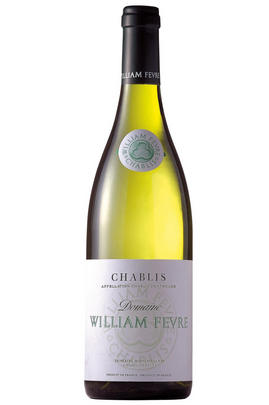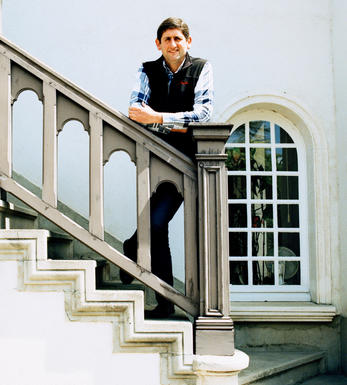
2021 Chablis, Domaine William Fèvre, Burgundy

Critics reviews
A little more depth of colour, and a slightly richer style of fruit, including some fresh plums. 7-8% wood for vinification. More aquiline on the palate though retains its rounder style, with good acidity however which pulls the finish out rather further.
Drink 2024 - 2027
Jasper Morris MW, Inside Burgundy (January 2023)
From domaine fruit.
Notes of mineral reduction and quinine add breadth to the exuberantly fresh aromas of green apple, lemon-lime and discreet floral nuances. There is good density to the attractively textured medium-bodied flavours that conclude in a saline-inflected, balanced, dry and lingering finale. A quality Chablis villages.
Drink from 2025 onward
Allen Meadows, Burghound.com (August 2023)
The 2021 Chablis Village comes from 46 hectares of vines and was cropped at 20hl/ha, the vines were converted to organic two years ago and are due for certification next year. It has a steely nose at first, opening nicely with hints of honeysuckle and wild peaches. The palate is well balanced with a fine thread of acidity, taut and focused, plenty of energy here with an added touch of spice that enlivens the finish. No doubt this will represent great value for money.
Didier Séguier was on hand as usual to guide me through the wines of William Fèvre. “All the Premier Crus and Grand Crus are matured 30% in barrel after the malolactic in March and then transferred back into stainless steel after around six months, then bottled after another year. I think the 2021s will give more pleasure younger than the 2020. It is more immediate. The sanitary conditions were more difficult in 2021, but similar vintages like 2001 and 2013 are drinking very well now. I’m an optimist.”
Drink 2023 - 2030
Neal Martin, Vinous.com (September 2022)
Aromatic and appetising. Very pure indeed – finely chiselled and technically perfect. Perhaps just a little less personality than the Pommier version. A little short.
Drink 2023 - 2027
Jancis Robinson MW, JancisRobinson.com (January 2023)
Aromas of green apple, blanched almonds and fresh mint preface the 2021 Chablis Village, a medium-bodied, firm and tangy wine that's chiselled, concentrated and acid-driven. It was cropped at a mere 15 hectoliters per hectare.
Drink 2025 - 2045
William Kelley, Wine Advocate (September 2023)
William Fevre own 46ha of AP Chablis but there was lots of frost damage in 2021 - the yield was just 18hl/ha! Lovely floral notes here, very precise and focused. This is already appealing although the acidity is certainly evident. Lingering spice notes on the finish. From a tank sample, with bottling due in November. Drink from next year and for many years.
Drink 2023 - 2027
Andy Howard MW, Decanter.com (October 2022)
About this WINE

Domaine William Fevre, Chablis
William Fèvre is one of Chablis’ greatest wine domaines, developed by the eponymous William Fèvre between 1957 and his retirement in 1998 when he sold to the Champagne House Joseph Henriot. William Fèvre began with just 7 hectares and had soon increased this to 48ha, planting widely in the best of the 1ers and grands crus where the vineyards had fallen by the wayside. However the Fèvre penchant for new oak was not to everybody’s taste.
Since the Henriot purchase the wines are made by the talented Didier Séguier who had previously been with the Bouchard team in Beaune. The domaine wines include 12 hectares of premier cru vineyards and no less than 16 hectares of grand crus.The whole crop of their domaine wines, straight Chablis included, is harvested by hand, the grands crus in small ‘cagettes’, with a sorting table back at the winery to ensure the quality of the raw material.
The 1er cru wines are vinified in 40-50% oak, the grands crus receiving 70-80%, but without using new wood – instead the domaine receives a plentiful supply of one year old barrels from Maison Bouchard, and the average age of wood in the cellars is 5 years old. The barrel and vat components are blended together after four to six months, for bottling before the end of the year.
In 1991 he joined forces with the Chilean producer Victor Pino and Vina William Fèvre was established in the heart of the Maipo Valley just outside Santiago.

Chablis
Chablis lies further north than the rest of Burgundy, located about halfway between Beaune and Paris; it’s actually not all that far from Champagne. The wines here – exclusively whites from Chardonnay – differ in style from other white Burgundies: they tend towards steeliness and flintiness.
The Chablis region is an island of vines lying amid the forests and pastures of the Yonne département. In the heart of Chablis, the soils are marl (clay-limestone) of a particular kind – Kimmeridgian – containing traces of marine fossils. For many, the classic aroma and flavour profile of Chablis is built around seashell and an iodine, marine character imparted by the soil.
As elsewhere in Burgundy, there’s a hierarchy in Chablis. Grand Cru represents the top tier, although it accounts for just one per cent of overall Chablis production. The Grand Cru vineyards rise above the eponymous town in an impressive sweep, sloping south. These are sunny sites, ranging in elevation from 100 to 250 metres above sea level. The wines are deep and powerful, benefitting hugely from bottle age after release. The best examples can age for up to 20 years. Over time, their colour evolves from greenish gold to a light yellow, and they develop real aromatic complexity.
Unlike the other tiers, it’s not uncommon for Grand Cru Chablis to see new oak. As a result, its flavour profile is perhaps more comparable to the Côte d’Or than the rest of Chablis. For something more classically “Chablis”, there’s the Premiers Crus. Style and quality can vary, depending on the climat and the producer. Whether floral or more mineral, the best examples are seriously impressive and represent the hallmark style of the region – they can also offer real value for money. These are structured wines with the capacity to age for 10 to 15 years.
The next tier – accounting for most of the region’s output – is labelled simply as “Chablis”. These are steely, clean and lean whites with aromas of green apples and lemon, intended for early drinking. As ever in Burgundy, there are exceptions: well-made examples by top growers from vineyards abutting the Premiers Crus can be age-worthy.
Finally, there’s Petit Chablis: everyday wines, generally from vineyards planted on higher slopes. Petit Chablis accounts for around one-fifth of all Chablis produced. These wines typically come from Portlandian limestone, known to produce a fruitier, simpler wine than Chablis.

Chardonnay
Chardonnay is often seen as the king of white wine grapes and one of the most widely planted in the world It is suited to a wide variety of soils, though it excels in soils with a high limestone content as found in Champagne, Chablis, and the Côte D`Or.
Burgundy is Chardonnay's spiritual home and the best White Burgundies are dry, rich, honeyed wines with marvellous poise, elegance and balance. They are unquestionably the finest dry white wines in the world. Chardonnay plays a crucial role in the Champagne blend, providing structure and finesse, and is the sole grape in Blanc de Blancs.
It is quantitatively important in California and Australia, is widely planted in Chile and South Africa, and is the second most widely planted grape in New Zealand. In warm climates Chardonnay has a tendency to develop very high sugar levels during the final stages of ripening and this can occur at the expense of acidity. Late picking is a common problem and can result in blowsy and flabby wines that lack structure and definition.
Recently in the New World, we have seen a move towards more elegant, better- balanced and less oak-driven Chardonnays, and this is to be welcomed.


Buying options
Add to wishlist
Description
Drawn from almost 50 hectares of vineyards exclusively on Kimmeridgian soils, Fèvre’s domaine bottling of Chablis is arguably the benchmark. The average vine age is 50 years and the yield this year reached 19 hl/ha. The wine has a fine, fresh lemony attack and a rewarding, refreshing weight. The finish is not particularly long but it has pinpoint typicity.
Drink 2023 - 2029
Berry Bros. & Rudd
wine at a glance
Delivery and quality guarantee